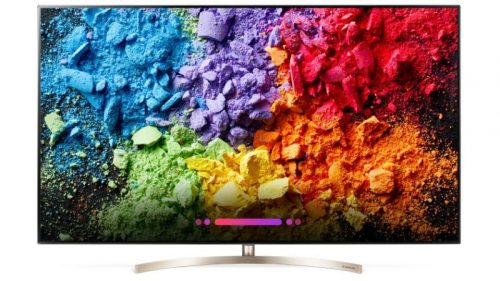You’ve finally decided to buy a 4K TV! These are the beautiful televisions that deliver four times the resolution of HD. But wait. There’s something you need to choose, and it’s a big one: panel technology. There are two kinds of 4K TVs available: OLED and LED LCD. It can be confusing when comparing the two types. So, here’s a look at the differences between display quality to help you make your final decision.
4K LED
Let’s start with the oldest and least expensive technology out of the two. As opposed to conventional LCD TVs, which use fluorescent tubes to illuminate the screen, LED-based LCD TVs like the LG 65” Super UHD 4K Smart TV from Buydig.com use light-emitting diodes behind the liquid crystals. This greatly improves contrast levels over the fluorescent-based LCD TVs. LED’s also have the ability to show deeper blacks for more depth. And they have a much brighter screen, and with richer and more vibrant colors. They’re thinner and lighter, making them easier to mount on a wall. Because they consume less power than competing technologies, they are even more eco-friendly. You’ll find a greater selection in size starting from 24-inches if you choose a 4K LED.
 4K OLED
4K OLED
Newer OLED TVs are made from carbon-based materials that emit light when electricity is applied through them. Many different consumer electronics devices utilize OLED panels because of the advantages they bring. OLED TVs are incredibly thin because each pixel, or dot, is its own light source, requiring no backlighting. OLED, Organic Light Emitting Diode, means each individual pixel is separately lit so is much better at providing contrast between the brightest whites and the darkest blacks than LCD. These TVs are much more energy efficient than other TV panel types as they sip rather than gulp electricity. OLED TVs are only available in large sizes: 55 inches and bigger. LG has the most OLED televisions, including the LG 55” Class C8 4K HDR Smart TV and the 65” from Buydig.com. OLED is not as bright as LED and is much pricier to boot, but it’s probably the best picture quality you can currently buy.
The Verdict: 4K TVs
All of the 4K TVs here are HDR-capable and as a result offer improved picture quality compared to most TVs older than a couple of years. Finally, when choosing a 4K TV, don’t hold back on going for a big screen. Picture resolution is so detailed that you can sit closer than you would with HD, making for a more immersive experience. Bigger is better with 4K, generally speaking.


Leave a Reply